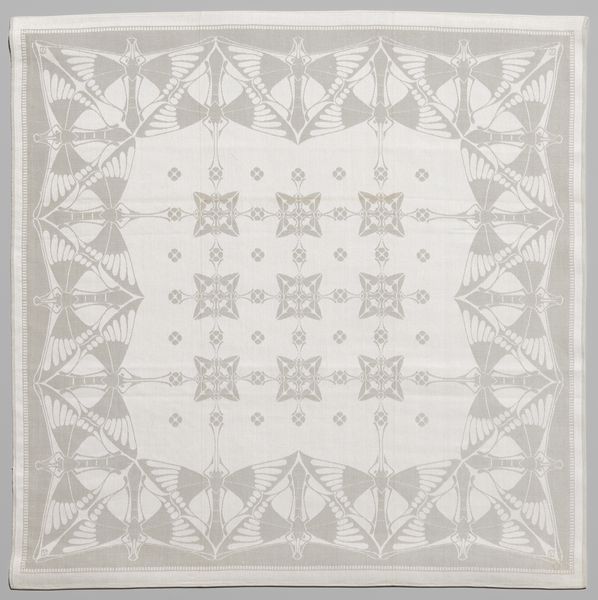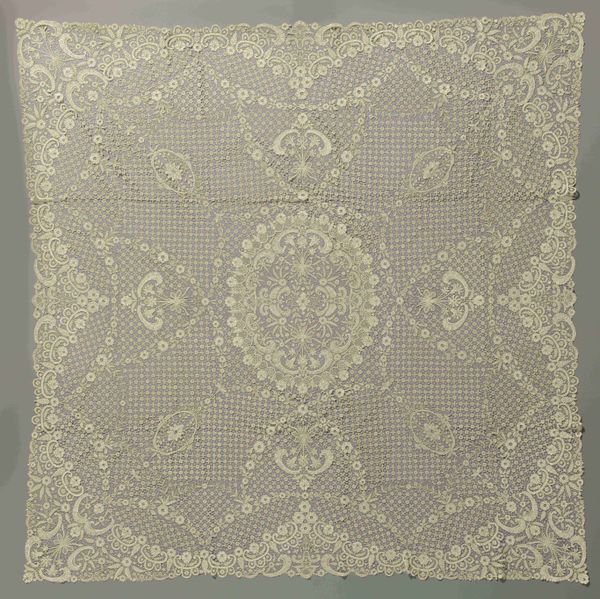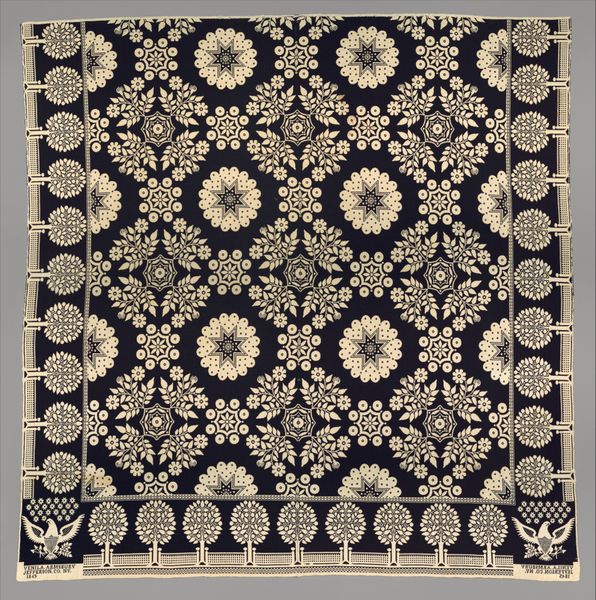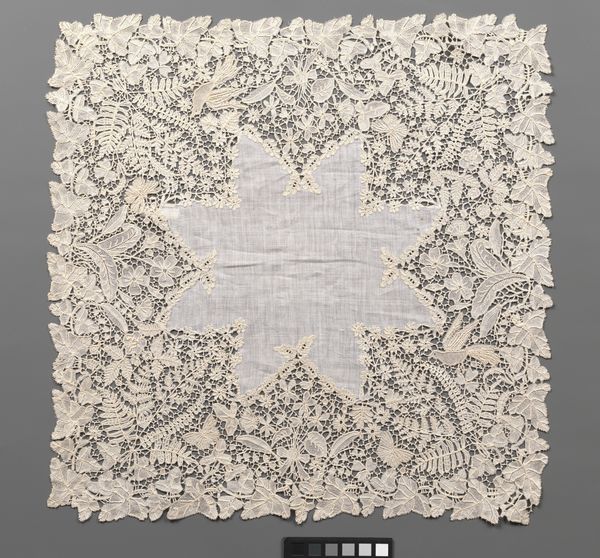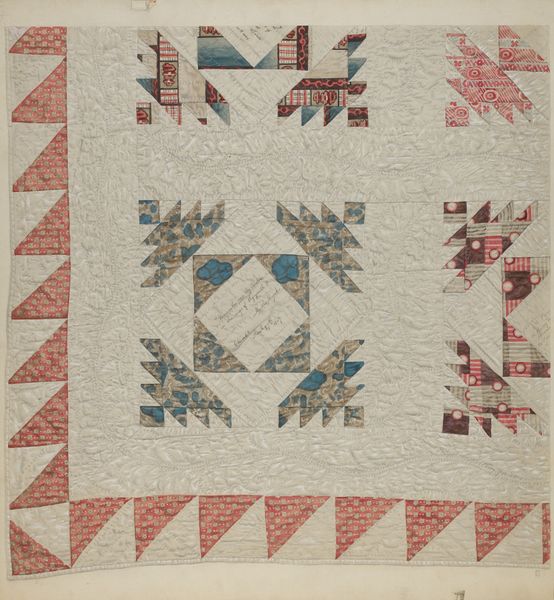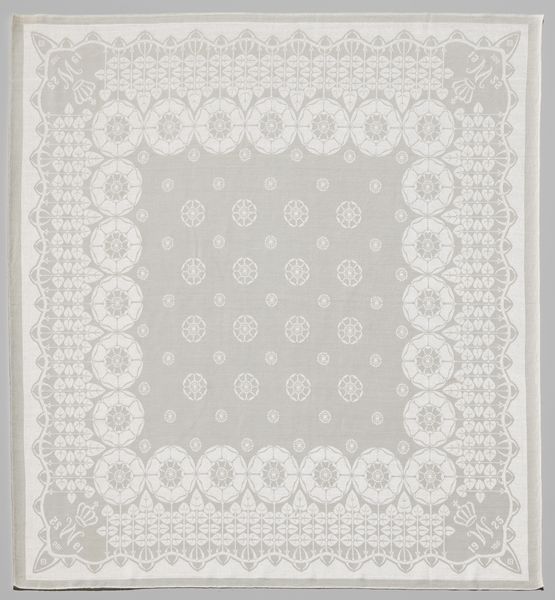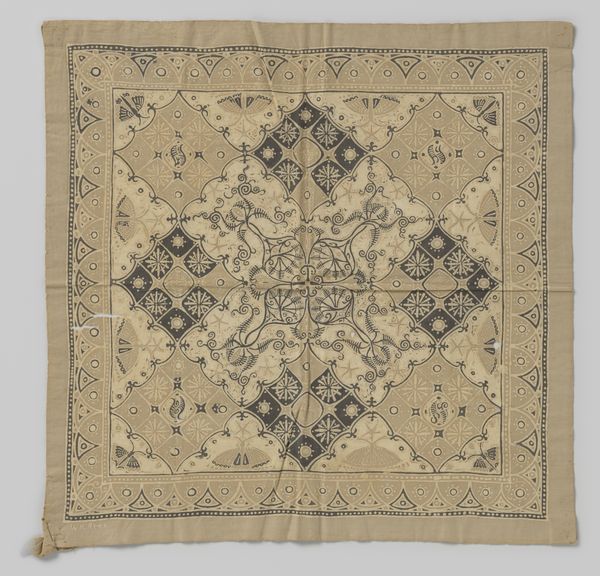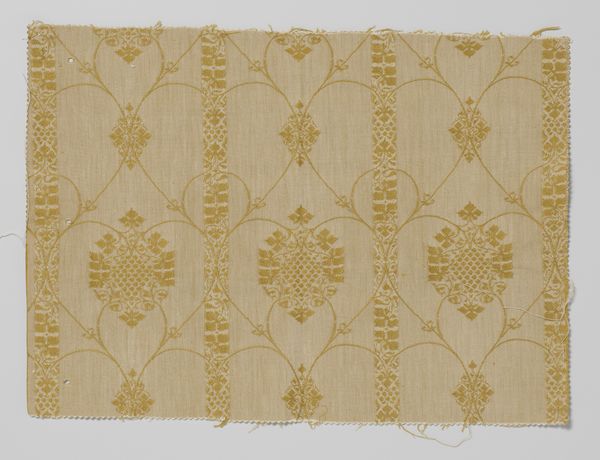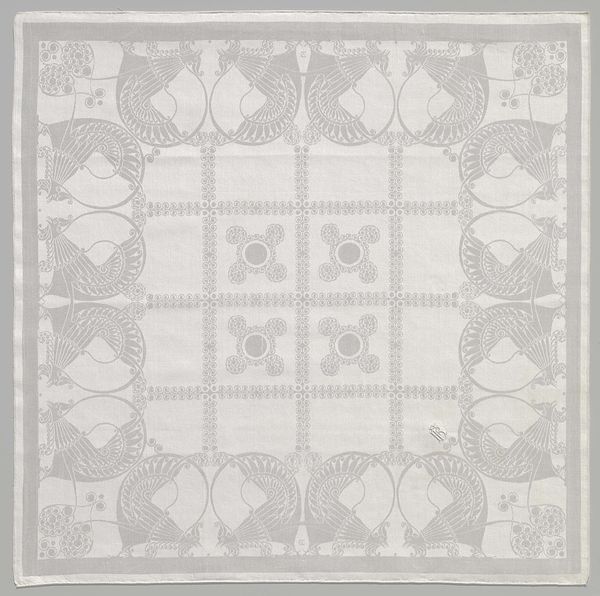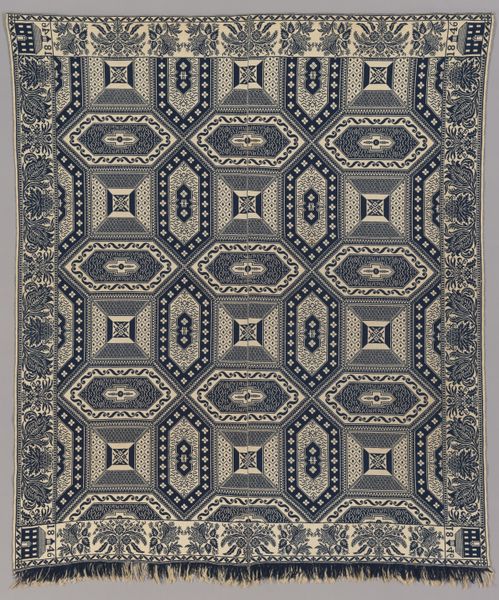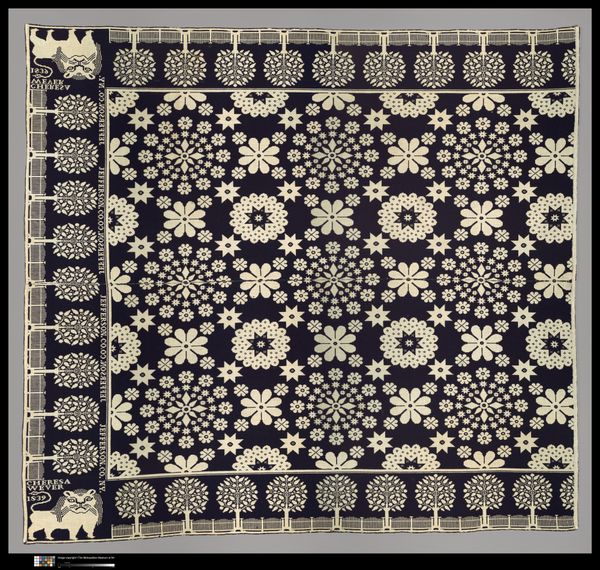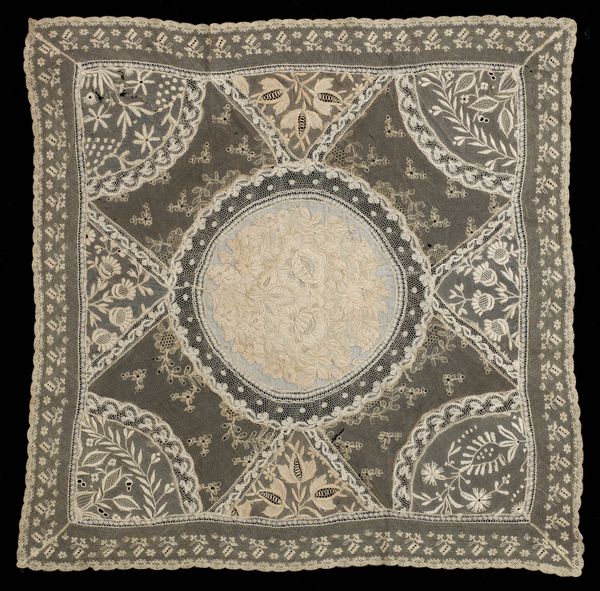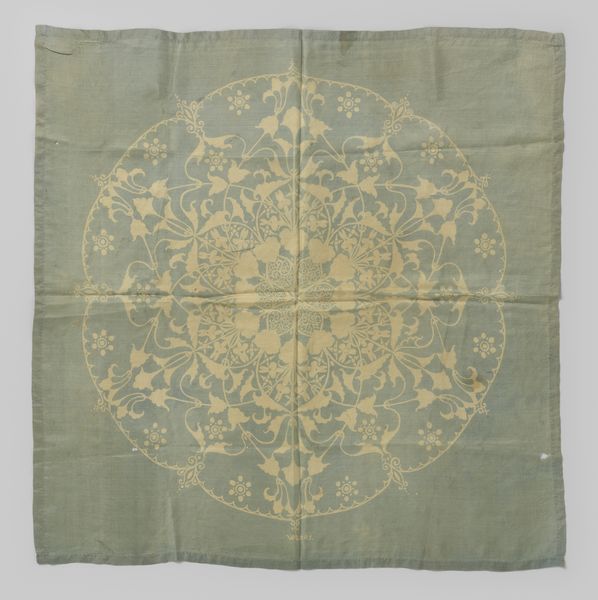
weaving, textile
#
natural stone pattern
#
art-nouveau
#
pattern
#
weaving
#
textile
#
repetitive shape and pattern
#
fabric design
#
repetition of pattern
#
vertical pattern
#
regular pattern
#
pattern repetition
#
textile design
#
decorative-art
#
imprinted textile
#
layered pattern
Dimensions: height 71.0 cm, width 70.0 cm
Copyright: Rijks Museum: Open Domain
Curator: This is "Servet 'Vlinder' van linnendamast," or "Napkin 'Butterfly' of linen damask," created in 1905 by Chris Lebeau and housed here at the Rijksmuseum. Editor: My initial thought? A fascinating dance between naturalism and geometric abstraction. There’s an almost ghostly quality to the pale linen. Curator: Indeed. Lebeau, deeply involved in the Dutch Arts and Crafts movement, infused symbolism into his work. Note the repeated butterfly motif, a symbol often associated with transformation, the soul, and ephemeral beauty. What connections do you draw from its time? Editor: Early 20th century textile production experienced an interesting tension. While industrial looms increased output, artists like Lebeau sought to preserve a sense of handcrafted artistry and individualism in the face of mechanization. This piece is less about mass production and more about evoking a particular aesthetic. There is that appeal to upper and middle-class consumers desiring something special that mass production cannot easily offer. Curator: The choice of linen damask itself is significant. It carries connotations of domesticity, refinement, and tradition. But consider also how Lebeau distorts conventional representations of nature within that tradition. The stylized butterflies almost read as architectural forms. Editor: Exactly. The repeating geometric elements remind me of a stylized take on a floral field or kaleidoscopic butterfly wings, a controlled representation rather than one in nature. We must also see it against an increasing national consciousness in Europe. It's fascinating how design becomes a vehicle for reinforcing collective cultural values, for good or ill. The Arts and Crafts movement did grapple with some issues regarding inclusion and exclusivity. Curator: A powerful reminder. This seemingly simple napkin encapsulates complex historical, social, and aesthetic dialogues. The butterfly, then, isn't merely decorative; it's a symbolic anchor, holding histories both personal and political. Editor: And seeing it today, one reflects on what domestic life represented then and how we negotiate functionality, aesthetic aspiration, and underlying meaning.
Comments
No comments
Be the first to comment and join the conversation on the ultimate creative platform.
